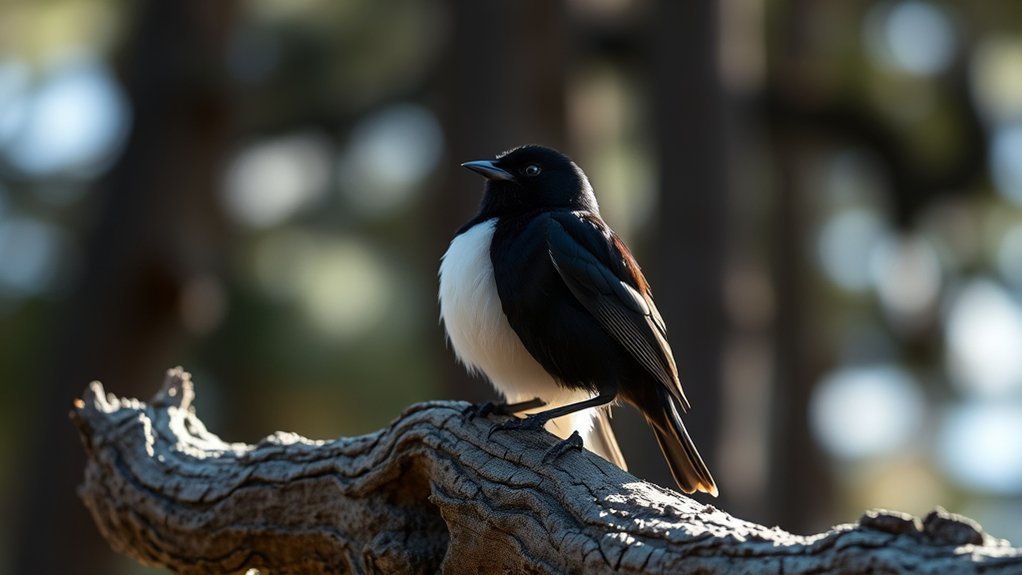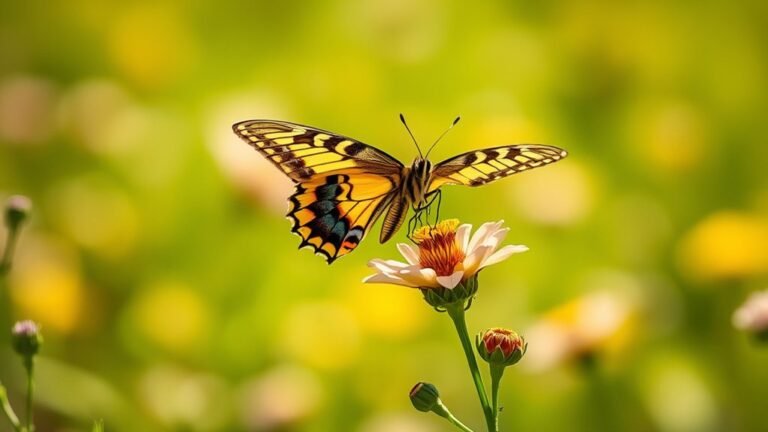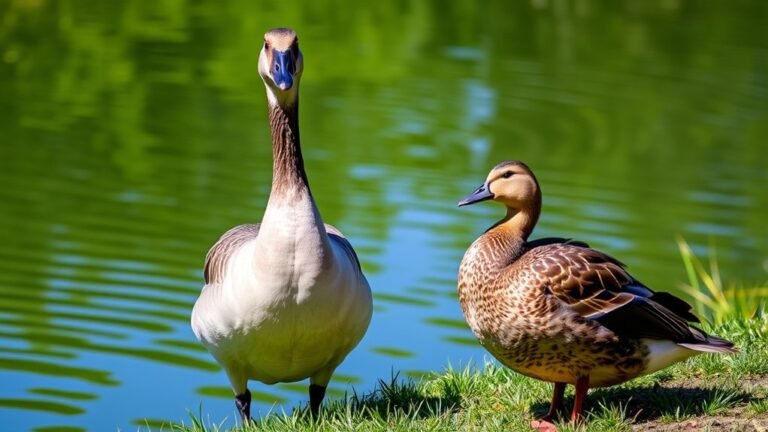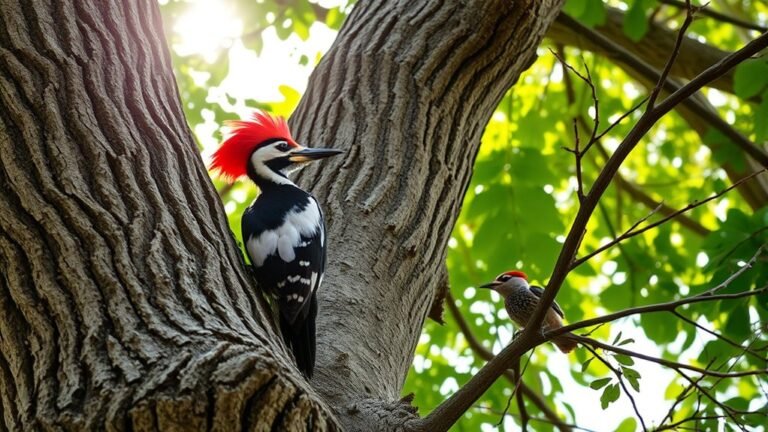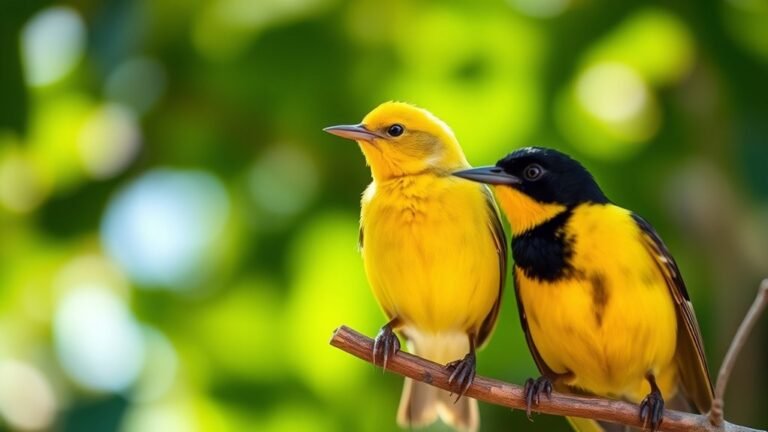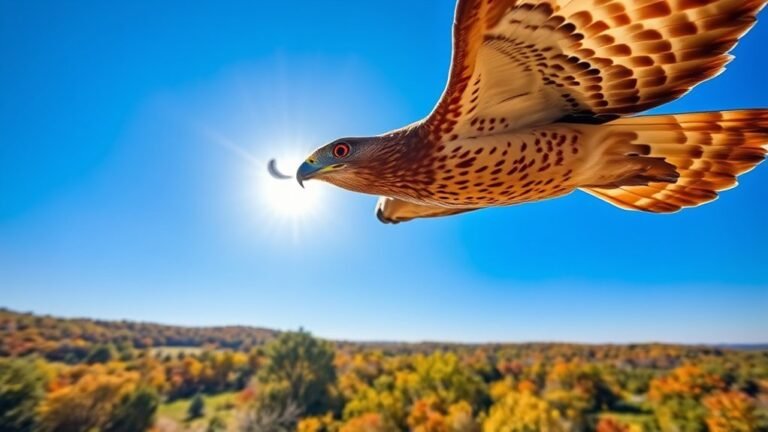Understanding the Behavior of Black and White Birds in Nature
When you look at black and white birds, you see their interesting colors and how they act in groups. Their colors help them survive, find mates, and talk to each other. If you watch how they eat and move from place to place, you can see how well they adapt to changes in their environment.
However, cities are changing where these birds live and how they behave. This makes us wonder: how will these birds adapt to a world that is always changing? What skills will they need to live happily in new places?
A Quick Overview
Black and white birds have special colors to help them stay warm and talk to each other. This helps them stay safe and find mates.
These birds change their eating habits with the seasons. They know how to eat different foods to stay healthy and find what they need.
During mating time, they show off with dances and songs. This helps them prove that they are strong and find a partner in their group.
Living in cities can be tricky for these birds. They have to change their behavior and choose different places to build nests and communicate.
Protecting their homes and natural spaces is very important. It helps keep black and white bird populations strong as their surroundings change.
Coloration and Its Role in Survival

Black and white feathers look beautiful and serve important purposes for birds. The colors do more than just catch our eye; they help birds survive. For example, black feathers soak up heat, which is helpful in cold weather.
White feathers can signal to other birds or attract partners during mating. These colors also help birds blend in with their surroundings. This way, they can hide from predators or sneak up on their prey.
Understanding how these colors work shows us how birds have adapted to their environments. This helps us appreciate the amazing variety of life on our planet.
Feeding Habits of Black and White Birds
When you watch black and white birds in their homes, you'll see they've lots of different ways to find food. These birds change what they eat based on the season. In spring, they often look for bugs and flowers to help them get ready for nesting.
In winter, they might eat mostly seeds and fruits. This change helps them stay healthy and survive.
Different birds, like magpies and orioles, have unique ways of finding food. Some search through leaves to find insects, while others pick up scraps from the ground.
Mating Rituals and Courtship Displays
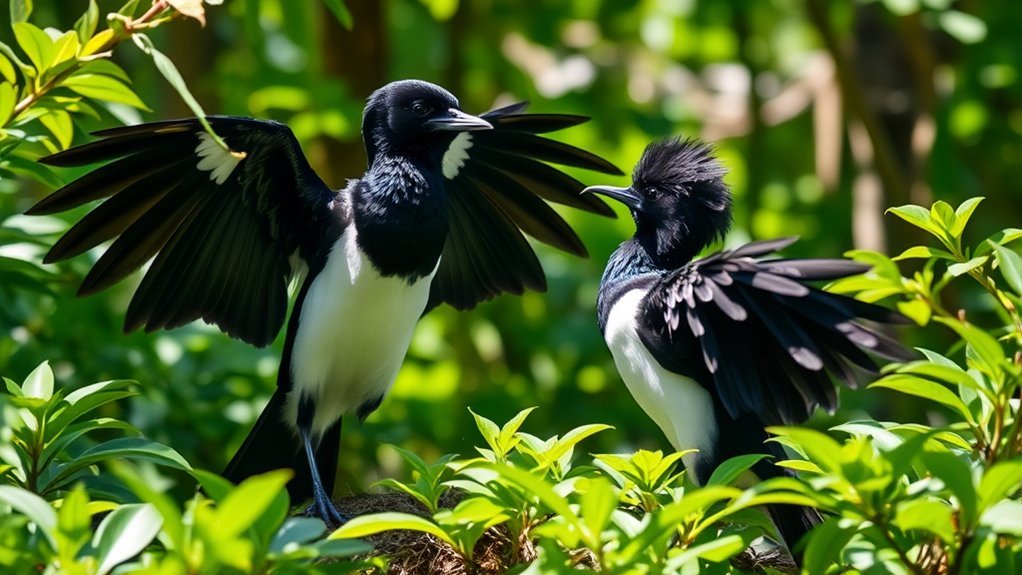
Mating rituals and courtship displays in black and white birds show us interesting behaviors that help them reproduce successfully.
These activities help birds attract mates and show off their strength and health.
You might see:
- Courtship dances: These are fancy movements that birds do to show they're strong and fit. They want to impress potential mates.
- Vocal displays: Birds use special calls and songs to let others know they're ready to mate and claim their space.
- Visual signaling: Birds often puff up their feathers or change their body positions to look more attractive. This helps them find a partner.
Learning about these behaviors makes us appreciate the beauty of birds.
Their rituals are part of how they connect and continue their species in nature. It's fascinating to watch!
Social Structures in Avian Communities
Birds have interesting social structures that help them live and survive together. In bird communities, some birds are more dominant. These dominant birds get the best resources, like food and places to nest. This gives them a better chance to raise their young successfully.
When birds form flocks, they look out for each other, making it easier to avoid predators. These groups not only help birds find food but also strengthen their friendships with one another.
For example, black and white birds engage in special activities like working together to build nests or resting in groups. These actions help build strong bonds between them.
Learning about how birds socialize can teach us a lot about how they adapt and survive. It also reminds us how important it's to have connections and friendships in our own lives. Being part of a community is something we all desire.
Migration Patterns and Behavior
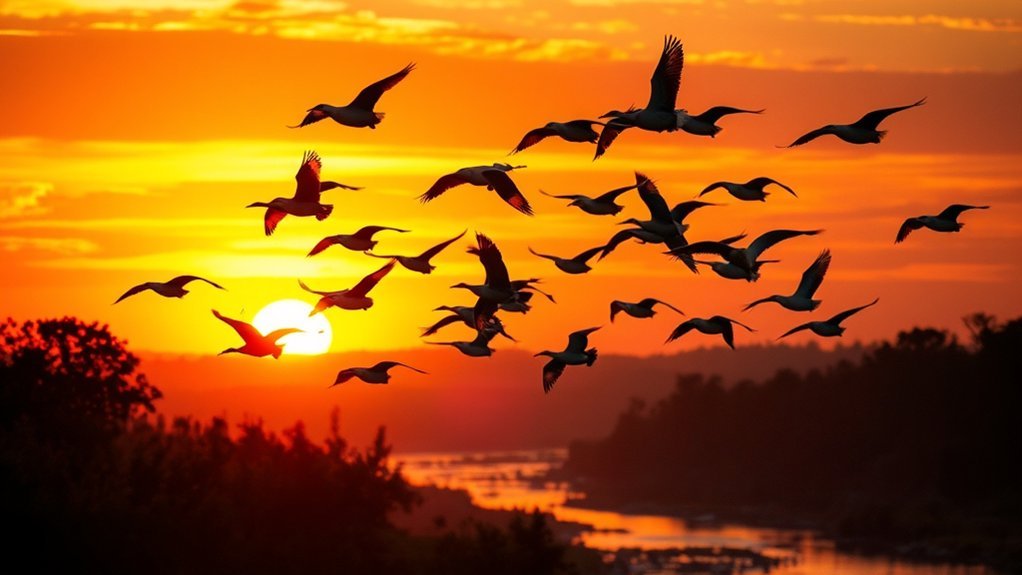
Many birds have fixed homes, but black and white birds have interesting travel habits that show how well they adapt to change.
Learning about how they move can help you appreciate them even more.
- Seasonal travel: These birds fly long distances to find good places to live and food to eat when the seasons change.
- Territorial behavior: Even while moving, they can be protective of their temporary feeding spots. They may chase other birds away to keep their food safe.
- Social behavior: When they travel in groups, they help each other stay safe and find their way. Flocking together makes their journeys easier.
Predation and Defensive Strategies
Black and white birds face danger from predators all the time. To stay safe, they use different tricks. These tricks help them survive in the wild.
One way they hide is by blending in with nature. Their colors help them disappear among leaves or rocks. This makes it hard for predators to spot them.
Some birds fight back by working together. They may try to scare off a threat by mobbing it. Many black and white birds also fly in quick, zigzag patterns. This unpredictable flight makes catching them very difficult.
Another clever tactic some birds use is pretending to be hurt. When a predator comes close to their nest, they act like they can't fly. This draws the predator away, protecting their young.
These smart strategies show how birds adapt to their surroundings. Learning about these behaviors helps us appreciate these amazing creatures even more.
Communication Methods Among Black and White Birds
Birds that are black and white need to communicate to stay safe and connected. They use different ways to share important messages.
Here are some key ways they talk to each other:
- Sounds: These birds make different calls. They might warn friends about danger, call for a mate, or mark their territory.
- Body Language: They use their movements and feathers to show feelings like strength or readiness to mate. For example, puffing up feathers can show they're strong.
- Adjusting to Their Surroundings: Different types of black and white birds change how they communicate. They might adapt their methods based on where they live or who they're with.
Nesting Habits and Reproductive Strategies
Black and white birds have interesting ways of building nests and raising their young. These birds pick safe spots to make their homes. They look for places that hide them from predators and are close to food.
When it comes to eggs, these birds have different ways to take care of them. Usually, one parent sits on the eggs while the other goes to find food. This teamwork helps more eggs hatch.
By watching how these birds behave, you can see how they survive in different places. They also help keep nature balanced by playing their part in the ecosystem.
Their nesting habits and family care show how smart they're in adapting to their environment.
Adaptations to Environmental Changes
As the environment changes, black and white birds adapt in amazing ways to survive. These birds can change how they eat and where they build their nests based on what's happening around them.
This helps them stay strong and thrive.
- Flexible eating habits: They find different food or go to new places to look for food when their usual sources are low.
- Choosing new homes: Birds might move or change where they build their nests when the weather or landscape changes.
- Changing sounds: They modify their calls to be heard over loud noises from people, which helps them mate and defend their territories.
These adaptations help black and white birds keep going in a changing world.
Cooperative Behavior and Altruism
Black and white birds survive by working together and helping each other. Their social behavior is really important. Many of these birds help take care of chicks that aren't their own.
This teamwork makes their community stronger and helps the young birds live longer.
When you watch these birds, you see them foraging for food, defending nests, or taking care of the chicks together. Each bird plays a part, and this support system is vital for their success.
Impact of Urbanization on Their Behavior
Urbanization changes how black and white birds behave. They've to adapt to new city environments. In these urban areas, birds experience more interactions with people. This affects how they find food, build nests, and interact with each other.
Here are some important changes:
- Dietary Changes: Birds often start eating food scraps left by people. They become good at scavenging.
- Nesting Behavior: Many birds choose to nest in buildings and other manmade places. This can make them less safe.
- Altered Social Interactions: Living in crowded places leads to more competition among birds. This may change how they find mates.
Learning about these changes helps us understand how birds fit into city life. Observing their actions can make us appreciate them more as they thrive alongside us.
Conservation Efforts for Black and White Bird Species
Conservation efforts for black and white birds are very important. These birds face many challenges, but researchers and organizations are working hard to help them survive. One of the key things is habitat preservation. This means making sure the places where these birds live are safe and healthy.
Did you know that projects focused on restoring their habitats have helped local ecosystems? This has allowed these birds to do better in their environment.
Another important step is protecting these species through rules against poaching and habitat destruction.
Educating communities is also part of the plan. Conservationists encourage everyone to join in and practice sustainable habits.
When we all work together, we can spread the word and support the long-term survival of black and white bird species. It's important to keep them in our world for everyone to enjoy.
Frequently Asked Questions
Do Black and White Birds Have Different Lifespans?
Do black and white birds live longer than each other? The truth is, how long birds live depends a lot on their type. Different species have different lifespans.
Many things can affect how long a bird lives. These include their homes (habitats), what they eat (diet), and the dangers they face (predation). For example, a little sparrow might not live as long as a big eagle, because eagles are higher up on the food chain and have fewer dangers.
In short, black and white birds can have different lifespans, but it's really about the type of bird and its environment. If you love birds, knowing about their life spans can help you appreciate them even more!
How Do Weather Changes Affect Black and White Birds?
Weather changes have a big effect on birds, especially black and white ones. When the temperature goes up or down, it can change when birds migrate and build their nests.
For example, if it gets warmer earlier in the year, birds might start breeding sooner. This means they need to find food and shelter that fits the new weather. Changing weather patterns can also influence where they choose to live during different seasons.
Are Black and White Birds More Aggressive Than Colorful Ones?
Black and white birds can show more aggression during mating. They want to show they are strong and attract partners. In contrast, colorful birds often use their bright colors to get attention instead. They rely more on their looks than on showing aggression. This difference can be interesting to see in nature!
What Are Common Threats to Black and White Bird Populations?
Black and white bird populations face several serious threats. These include habitat loss, which happens when places where birds live get destroyed. More predators in the area can also lead to increased risks for these birds. Climate change affects their environment, making it harder for them to survive. Additionally, pollution can harm their health and food sources. Because of these issues, it's very important to support efforts to protect these birds and their homes. By taking action, we can help keep their populations strong and healthy.
Can Black and White Birds See Colors Differently Than Humans?
Black and white birds see colors in a different way than humans do. They have a special way to view light that lets them see colors we cannot. For example, they can see ultraviolet light, which is invisible to us. This ability helps them understand their surroundings better. They notice things like food and mates more easily because of these extra colors they can see.

Luna is the passionate founder and author of Birds and You, a website dedicated to sharing her love for birds with fellow enthusiasts. Through her engaging articles and guides, she aims to educate and inspire others to explore the fascinating world of birds. When she’s not writing, you can find Luna observing birds in their natural habitats or sharing beautiful bird photography on Pinterest. Join her on this journey to celebrate and protect our feathered friends!

